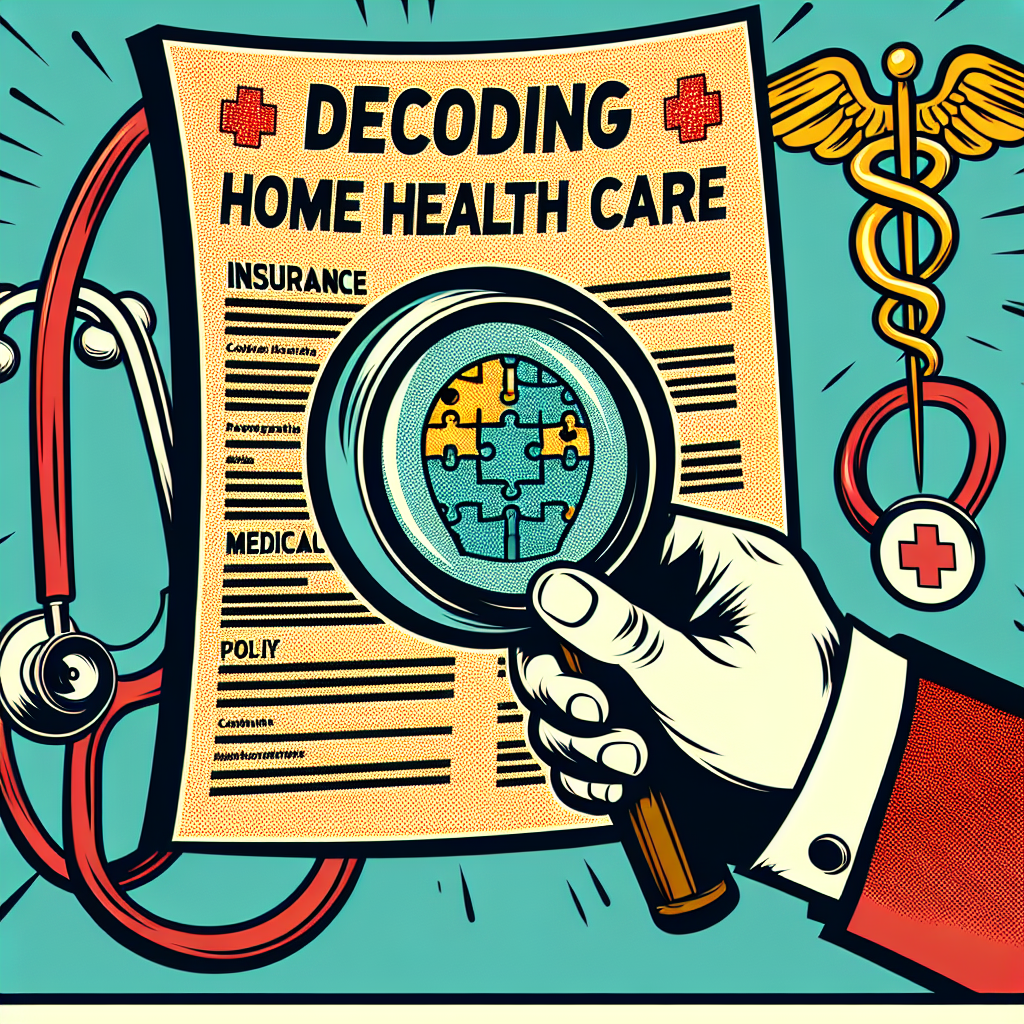Filed under Health Insurance on
Decoding Home Health Care Insurance Coverage

Understanding home health care insurance coverage can be the key to unlocking necessary medical support without financial strain. As our population ages and the demand for home health services rises, navigating this coverage becomes increasingly important. Here, we delve into this essential aspect of healthcare, outlining everything you need to know to ensure you're adequately covered.
What is Home Health Care Insurance?
Home health care insurance is designed to cover medical services provided in a patient’s home. This type of coverage helps patients receive care in a comfortable environment, facilitating recovery and ongoing health management. Typically, it includes skilled nursing care, physical and occupational therapy, and assistance with daily activities.
The Importance of Home Health Care Insurance Coverage
The significance of understanding and leveraging home health care insurance cannot be overstated. As chronic illnesses and recovery from surgeries become more common, the need for affordable in-home care solutions grows. Proper insurance coverage offers peace of mind and financial protection, ensuring patients receive necessary care without excessive out-of-pocket expenses.
Key Benefits
- Cost-Effective Care: Home care can be more economical than long hospital stays or extended nursing facility care.
- Comfort and Convenience: Receiving care at home provides comfort and convenience for patients and their families.
- Customizable Care Plans: Plans can be tailored, focusing on specific patient needs.
Components of Home Health Care Insurance Coverage
Understanding the different components of home health care insurance coverage can help you make better-informed decisions. Let's explore these components for a comprehensive view.
Skilled Nursing Care
Nurses provide medical treatments such as wound care, injections, or monitoring vital signs, all integral to specialized home care.
Therapeutic Services
- Physical Therapy: Aids in mobility and physical rehabilitation.
- Occupational Therapy: Improves skills for daily living and working.
- Speech Therapy: Assists with speech and communication disorders.
Personal Care Assistance
Trained aides help with bathing, dressing, and other activities of daily living, enhancing patient comfort and safety.
Decoding Insurance Policy Terms
Insurance jargon can be perplexing. Here's a breakdown of common terms associated with home health care policies.
Coverage Limits
Understand the extent to which services are covered. Policies may have financial ceilings or time limitations.
Eligibility Criteria
Some policies require a physician's certification of medical necessity or that the care be part-time or intermittent.
Co-Payments and Deductibles
Aware of your out-of-pocket responsibilities, as they can vary widely between policies.
Current Trends in Home Health Care Insurance
The landscape of home health care insurance coverage is continuously evolving, driven by demographic changes and technological innovations.
Personalization of Care Plans
Insurers are offering more personalized plans that cater to individual health profiles and specific conditions.
Telehealth Integration
The rise of telehealth has expanded the scope of home care, allowing remote consultations and monitoring which are increasingly being covered by insurance.
Focus on Preventive Care
Insurance providers are emphasizing preventive care to reduce long-term costs, covering more services that prevent conditions from worsening.
How to Choose the Right Home Health Care Insurance Plan
Choosing the right plan requires a careful assessment of your individual needs and potential future requirements.
Assess Your Needs
- Consider current health conditions and potential future risks.
- Evaluate your budget for premiums and out-of-pocket expenses.
Compare Plans
Use comparison tools and consult with agents to understand differences in coverage and costs across providers.
Consult Experts
Seek advice from healthcare professionals or financial advisors who can offer insights tailored to your situation.
Real-Life Examples and Case Studies
Understanding practical applications and real-life scenarios can help demystify home health care insurance coverage.
Case Study: Chronic Illness Management
Consider a patient with chronic heart disease. Insurance covering in-home nursing care and regular telehealth check-ins can significantly improve their condition while reducing costs compared to traditional hospital visits.
Personalized Plan Success
An elderly person with mobility issues benefitting from a customized plan that includes physical therapy and personal care assistance may see improved autonomy and quality of life.
The Future of Home Health Care Insurance
The future looks promising with innovations aimed at enhancing coverage and service delivery. Technology, coupled with smarter policy design, is set to revolutionize home health care insurance coverage.
Artificial Intelligence and Automation
AI-driven solutions are being explored to assess risk profiles and automate claims, improving efficiencies and patient satisfaction.
Comprehensive Wellness Programs
Future policies may integrate wellness programs that promote holistic health, covering wider arrays of services such as nutrition counseling and mental health support.
Decoding home health care insurance coverage involves understanding complex terms, staying ahead of industry trends, and making informed decisions tailored to personal health needs. By embracing available resources and seeking professional guidance, individuals can optimize their insurance coverage, ensuring access to the best possible care.





